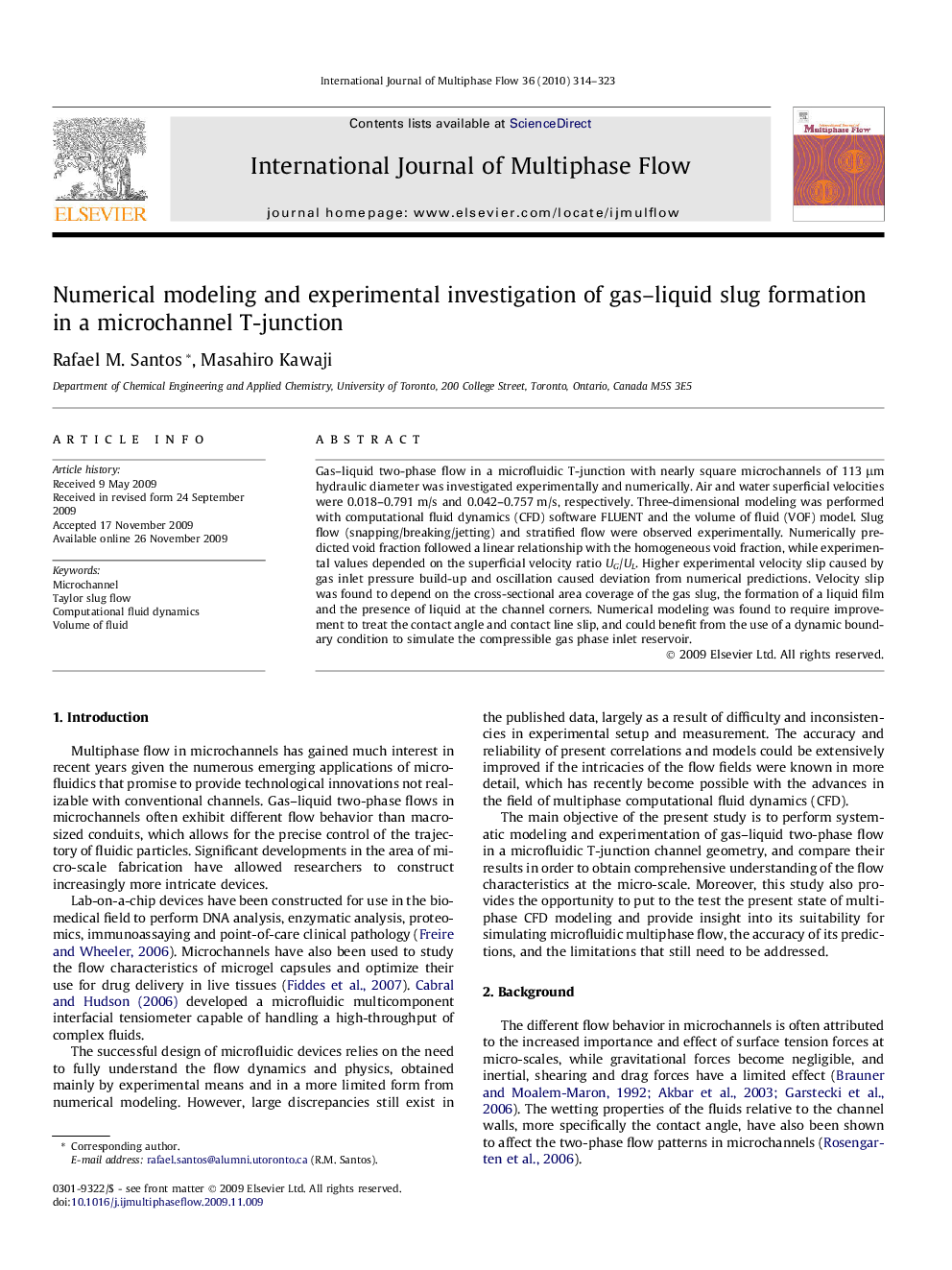| Article ID | Journal | Published Year | Pages | File Type |
|---|---|---|---|---|
| 667414 | International Journal of Multiphase Flow | 2010 | 10 Pages |
Gas–liquid two-phase flow in a microfluidic T-junction with nearly square microchannels of 113 μm hydraulic diameter was investigated experimentally and numerically. Air and water superficial velocities were 0.018–0.791 m/s and 0.042–0.757 m/s, respectively. Three-dimensional modeling was performed with computational fluid dynamics (CFD) software FLUENT and the volume of fluid (VOF) model. Slug flow (snapping/breaking/jetting) and stratified flow were observed experimentally. Numerically predicted void fraction followed a linear relationship with the homogeneous void fraction, while experimental values depended on the superficial velocity ratio UG/UL. Higher experimental velocity slip caused by gas inlet pressure build-up and oscillation caused deviation from numerical predictions. Velocity slip was found to depend on the cross-sectional area coverage of the gas slug, the formation of a liquid film and the presence of liquid at the channel corners. Numerical modeling was found to require improvement to treat the contact angle and contact line slip, and could benefit from the use of a dynamic boundary condition to simulate the compressible gas phase inlet reservoir.
